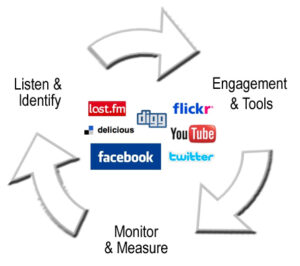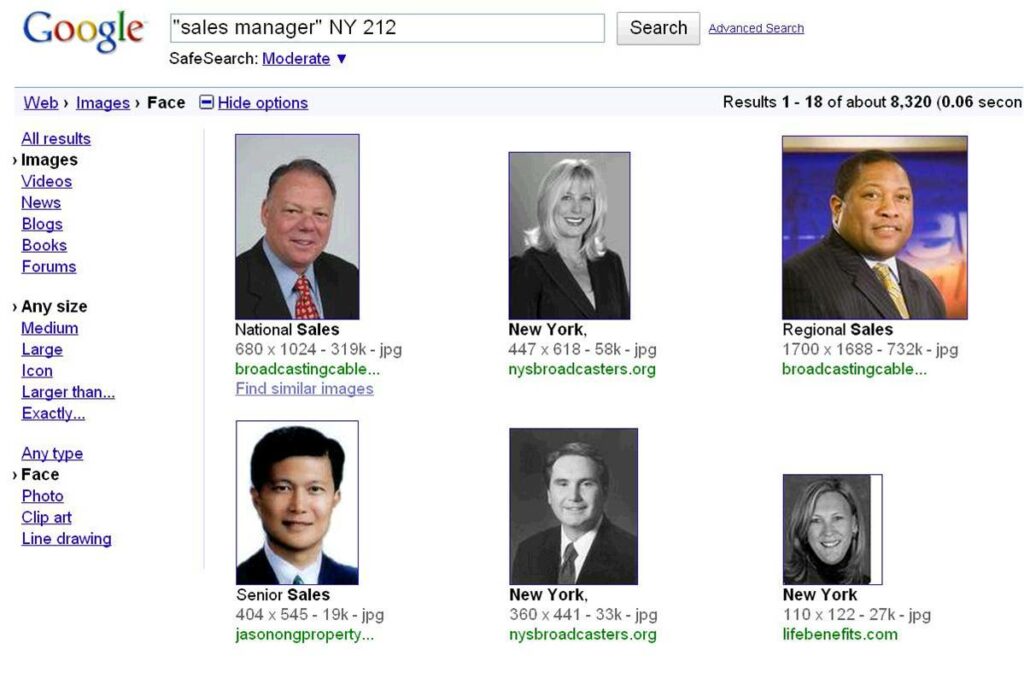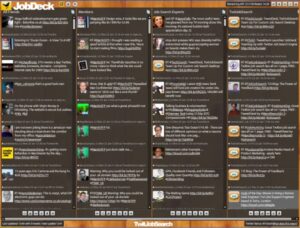Do you subscribe? You should, we give away really cool things for free: Click to Subscribe
Online conversations are all the rage today. Which got me thinking. I should write about what isn’t getting much play today, but is  still central to the recruiter’s world. The telephone call. This site, short for Recruiter Talk, reinforces this. “Talk” to me means voice-to-voice speech.
still central to the recruiter’s world. The telephone call. This site, short for Recruiter Talk, reinforces this. “Talk” to me means voice-to-voice speech.
Certainly, there’s value to an integrated web presence, online networks and short e-conversations – IM, texting and Twitter. (Topics for another piece.) However, in my experience, there’s nothing more effective – in speed, focus and quality in building relationships – than the good old-fashioned phone call. If it’s done right.
In today’s market, the emphasis is on finding open positions and marketing clients. In a candidate-driven market, the focus is on recruiting. In both marketing and recruiting, the same approach applies for the first phone conversation.
In my training, I talk about the three elements of a World Class Call:
1) Content – What you say. Specific words that grab attention and engage.
2) Delivery – How you say it. Upbeat. Personable. Professional speech. Varied voice tone.
3) Timing – When you say it. Getting the right person on the phone at the right time.
Before making the call, you need to do research, name sourcing and think through what you’re going to say. Here is the process my firm takes, followed by a recent marketing call I had.
Finding Open Position:
You can locate open jobs today through the social media sites. In this case, we found a VP Finance through LinkedIn’s “Jobs” feature. The position was in our recruiting niche and our geographic focus. The job description stated the company’s name and that the position would report to the Chief Financial Officer.
Sourcing the Hiring Manager:
Before making the call, we need four pieces of information. The Hiring Manager’s: 1) Name, 2) Title, 3) Direct Phone Number, and 4) Email address. In this case, we sourced the CFO’s name through a web search using parameters: [Company, CFO]. We found the company’s phone number on the firm’s website. We called into the firm and asked the CFO’s assistant for his email address. When she wouldn’t give it out, we learned the firm’s email string through a web search. It was: [first name (dot) last name @ company.com]. We plugged in his name.
First Contact: Voice Message + Email:
I then called back into the company and left a voice message for the CFO. I said, “Hi Bill, I’m Mike Ramer, we haven’t spoken before”, stated who I was and that there were two reasons for my call, but couldn’t leave a detailed message for reasons of confidentiality, but would send an email. I then sent a short email with the subject line: “Time to Talk?” The next day, he emailed me back that he couldn’t talk that week because he had a family emergency, but that I should follow up with him the following week. I emailed him back that I would.
Pre-Call Research:
We then researched him and his firm on the web and LinkedIn. We learned he was also an EVP and Board Director. We learned about the size of his firm, its products and recent company news. We learned his experience, his education and, since he was a company officer, his current compensation was online. He lived in New York and was educated in New Jersey (my home state). The take-away here: Find out what you have in common (work, life, interests) before making the call. These could be areas of engagement.
The First Call:
World class calls are great conversations. There is a free flow exchange which mixes both personal and business topics. In the first 15 to 30 seconds, we create the first impression. Over the next two to three minutes, we create “call chemistry”. As quickly as possible, you’ll want to begin asking questions to engage in a dialogue. From the beginning, keep in mind the three elements: Content, Delivery, Timing. Here’s the transcript of my marketing call:
Mike: Hi Bill, I’m Mike Ramer. We traded messages last week. I’m President of my search firm in Northern New Jersey – in the New York area. We specialize in working with mid-to-senior management in your industry. We’ve been at it for 18 years and have established relationships with leading firms and have deep contacts in your area. I hope all worked out for you last week. You mentioned you had a family emergency?
CFO: Yes, my mother had a medical emergency. She was in the hospital. But she’s back at home and fine now.
Mike: That’s good to hear. You know, I think about it more and more. The older we get, health is most important. Lately, I’ve been  thinking more about my parents and try to enjoy each moment I’m with them. I understand you’re in upstate New York? I drive through your area two or three times a year on route to visiting my in-laws. It’s good country and low cost of living, right?
thinking more about my parents and try to enjoy each moment I’m with them. I understand you’re in upstate New York? I drive through your area two or three times a year on route to visiting my in-laws. It’s good country and low cost of living, right?
CFO: It is. Housing costs are low and the schools are pretty good. We’ve been up here about seven years now. I’m a Jersey boy originally. I went to Rutgers and grew up in Toms River.
Mike: Really! We have Jersey roots in common. My family used to have a place near Island Beach State Park near Toms River. I like the shore area and visit once or twice a year with my family. What made you move to upstate New York?
CFO: To be by my wife’s family and this career opportunity. I’ve been happy with the move. The firm’s been doing very well. We’re up to $900 million in revenue and were added to the Russell 5000 index a couple years ago. The stock’s moved up nicely since then.
Mike: That gets to the two reasons why I wanted to speak with you, Bill. The first – my firm is on a search for a CFO in Southern Connecticut. It’s an excellent well-established firm, great management team – one of my best clients. They’re currently private, about $1.2 Billion in revenue – and poised to go public. They’re seeking a CFO who has been through the IPO process. It could be very lucrative.
CFO: I did that here for our firm. (He explains what he did.) Though, I’m pretty well set here, but might consider if the opportunity is to good to refuse.
Mike: I understand. This position might be for someone in your network. (My take-away.) I’d like to send you the job description for your review and if you know a colleague you could feel free to share it. The second reason I wanted to talk to you was I understand there is an open position under your management for VP Finance that will be responsible for (read requirements from job posting.)
CFO: Well, Mike, we’re probably set with that. I have eight candidates’ resumes who look pretty good. The top one lives in Texas and she wants to come back here to be closer to her family.
Mike: I hope that works out for you, Bill. It’s always a challenge to find the right-fit candidate, with the right mix of background and experience. I figured you’d probably have to relocate the person. If it happens not to work out, my firm can assist. Are there other positions you might be hiring for in the near term?
CFO: In fact, I just had a meeting with my HR Director this morning. We’ll be looking to bring on two Senior Client Development Officers for a new division in Saratoga within the next three months. We may need some help with that. How does your firm work?
Mike: We have contacts in that area and have worked searches like that. The choice candidates will be local and have established books of business. The top performers will probably not have their resume updated and want to keep all confidential. They’ll have to be recruited. (Explain search and recruiting process.)
CFO: Sounds good, Mike. Could you send a proposal and follow up with me in a couple of weeks?
Mike: I will next week and also put my card in the mail to you. Great to talk with you, Bill. I enjoyed the conversation. I’ll follow up with you in a couple of weeks after I send the proposal.
The four steps after the first conversation are:
1) Email the next day. In subject line: “Our Conversation/Follow Up”.
2) Mail short note with business card, referencing first conversation.
3) Send the recruiting proposal within the week, by the time we said we would.
4) Email to schedule the second call. (That dialogue is for another post.)
The World Class Call is customized for the hiring manager and each situation. There are no standard scripts that work every time. Only a format, an approach. This summarizes mine:
- Keep in mind your end goal (in this case, learning about open positions).
- Have a personal, professional conversation.
- Use your research. Engage in topics you have in common.
- Be sincere. Be yourself. Ask questions. Listen.
- Make the conversation memorable.
- Then follow-up, again and again.
In my experience, this has been the most effective way to develop rewarding new relationships – in any economic market. The phone call may not be in fashion now. Though, person-to-person voice conversations will never go out of style, because of their relationship-building power.
_________________________________________________
 Mike Ramer, CPC, CSP is founder and president of Ramer Search Consultants in the New York area. He is an international trainer for the search and recruitment industry. Mike designed The Art of Search (c) training programs, which he presents in-house at recruiting firms and industry events worldwide. He has trained 2,500+ recruiting professionals at 50+ events including; NAPS, ASA and Fordyce conferences. He was the highest rated speaker at 2009 NEAPS, New England’s regional conference.
Mike Ramer, CPC, CSP is founder and president of Ramer Search Consultants in the New York area. He is an international trainer for the search and recruitment industry. Mike designed The Art of Search (c) training programs, which he presents in-house at recruiting firms and industry events worldwide. He has trained 2,500+ recruiting professionals at 50+ events including; NAPS, ASA and Fordyce conferences. He was the highest rated speaker at 2009 NEAPS, New England’s regional conference.
Mike’s firm also offers “human capital” services, including; Career Coaching, Job Search Consulting and Employment Expert Services for legal cases. He is very active on social media sites; LinkedIn, Twitter and Facebook. Connect with him and he’ll respond to you! Mike lives in the New York area and loves to travel and coach his boys’ sport teams. He is a believer that “attitude determines altitude” in business and life. For more about Mike and his training, visit his firm’s website, www.RamerGroup.com or email him [email protected]. Follow him on Twitter @MikeRamer.
 How many times have you heard someone say, “Huh, that’s different.” It’s not necessarily a compliment. Different will only get you so far, it may grab someone’s attention however to keep it, you need to be better, more importantly you need to be effective.
How many times have you heard someone say, “Huh, that’s different.” It’s not necessarily a compliment. Different will only get you so far, it may grab someone’s attention however to keep it, you need to be better, more importantly you need to be effective. Marianthe Verver has been active in Corporate Recruiting and HR Roles for 10+ years. Currently she is the Corporate Recruiter for NeoSpire, where she specializes in full life cycle recruiting for IT and Sales positions. In 2009 she was honored with “Employee of the Year” for her contribution in placing top talent.
Marianthe Verver has been active in Corporate Recruiting and HR Roles for 10+ years. Currently she is the Corporate Recruiter for NeoSpire, where she specializes in full life cycle recruiting for IT and Sales positions. In 2009 she was honored with “Employee of the Year” for her contribution in placing top talent. 












































